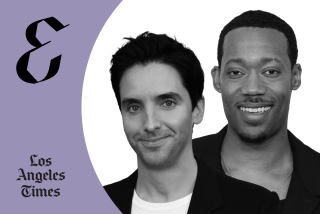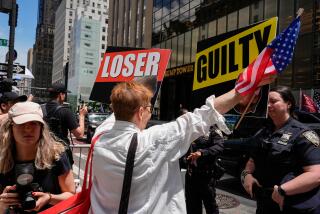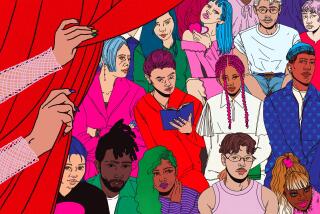Ex Libris
The most perpetually fluttering emblem of American life is not the flag but the proclaimedly self-evident proposition that we are all created equal. It is embedded in us; not necessarily because we believe it, but because in some fashion it is necessary for us to believe it. Our national comity, our willingness more or less to put up with each other, is sustained by those moments and conditions that help the belief along. Our personal, communal or sectional rages occur when we find ourselves doubting.
Take the publishing business, so largely anchored in self-help books. The vision of youthfulness through exercise, the universal prospect of lowering your taxes by investing in mayonnaise mines, the untrammeled possibility for every man and woman to join top management by following 14 basic office rules--all these things float our national sense of equal possibility.
Rage and a deep sense of failure may follow some months later, but by then, a new book is out and the old one is in the attic. Where would we be without attics: the repositories of so much failed or unusable history? Do people with attics make revolutions?
Evidence does drift up from time-to-time that we may be, in fact, a society of classes and class limitations, even if not in the traditional fashion of Britain. It is not precisely a dirty little secret; yet it disconcerts us when we come across it.
Two recent books manage to trouble our assumptions about class and equality. Peter W. Cookson Jr. and Caroline Hodges Persells have produced a painstaking study of the most elite private boarding schools in the United States. Some 55 schools were visited and questioned, including such places as Groton, Choate, Andover and Exeter in the East, and Thacher, Cate and Ojai Valley in the West.
An examination, you might think, of something precious and marginal, like a dwindling species of humming bird. The study shows otherwise. Its title is “Preparing for Power.”
The authors show both sympathy and skepticism. They write well, besides. Along with illustrations of just how good and imaginative the teaching can be, they portray the stress and loneliness that competition can produce. They give a restrained but persuasive account of the cynical counter-culture which the students assemble to keep some privacy for themselves, even as they half-accept and half-reject the ice-cold shower of virtue emitted by the institution.
They are amusing about the polished mix of frankness and discretion they encountered. They have an eye for the studied informality of a New England headmaster’s office. The high proportion of these, they observe, have dogs in their studies; usually hunting dogs and almost always pedigreed.
They recognize that many of the schools have gone some ways to opening their ranks to students of all social classes. Yet their conclusion remains.
The elite private schools still draw overwhelmingly from a privileged class. The education they administer is similarly privileged. And this head start emerges in the clear statistical favor they receive--grades apart--in getting places in top colleges.
The authors draw a startling picture of the effort with which prep school counselors, mainly in the East, teach the tactics of college admission, the care they put into writing up recommendations, and the lobbying they do at the colleges themselves. The first-name relationships with Ivy League admissions officers, the frequent visiting, and, in the case of Harvard, separately-colored folders to hold applications from particular prep schools; it all adds up to the same point. To adapt the phrase about computers and garbage: privilege in, privilege out.
Another suggestion of American class boundaries has been produced by the photographer Jim Goldberg; less conclusively, since it is art and not analysis; and for the same reason, more affectingly.
Goldberg photographed the impoverished residents of a San Francisco slum hotel. He showed each of them a print and asked them to write on it a sentence about what the photograph suggested about their life. Having done so, he photographed a number of rich San Franciscans and asked them to do the same thing. The results in “Rich and Poor” are extraordinary, both in the contrasts and in one or two ways, the similarities.
Both the haunted eyes of the poor, looking into the camera out of their paint-flaked single-rooms; and the quizzical eyes of the rich in their large and handsome quarters, tell us something about human nakedness, whether clinging to possessions or lacking them.
In other ways, of course, it is the differences that stand out. One or two of the poor declare their condition with anger or irony. Crystal, sitting on a bed with her son, writes, “If I didn’t have my kids I would go get dynamite and blow this place up.” Emily, stout and clutching her little girl, half-smiles and writes: “We look like ordinary people! We have a terrible life.”
Somehow, this anger or irony makes them seem less poor. It is those who proclaim contentment or hope who express most strongly the depths they are in. As with Clyde, backed against a window and declaring with a dead look: “I am going to build me an empire.” Or Charles, his arms clasped behind him as if they were bound: “I am trying everday to be something instead of that nothing I look like.”
Up on San Francisco’s hills, the gulf is expressed differently. The poor look imprisoned; the rich look besieged. Sometimes it is by the world outside. A woman standing beside her penthouse telescope: “The world down there is scary. There are so many problems.” Mostly it is by their own possessions. A young woman on an expanse of black sofa: “I wish I could see more softness in myself.” Another woman in a roomful of sculptures: “I am not in awe by the art which surrounds me. I can rearrange it every once in a while.”
Rich or poor, Goldberg’s people tend to say: “We are all right” or “We will be all right.” There is a kind of surface equality there; it is the contrast between picture and words that shocks us. Perhaps it shouldn’t. Faith in the self-evident nature of our natal equality means that failure is more likely to breed personal depression than social upheaval.
More to Read
Sign up for our Book Club newsletter
Get the latest news, events and more from the Los Angeles Times Book Club, and help us get L.A. reading and talking.
You may occasionally receive promotional content from the Los Angeles Times.






